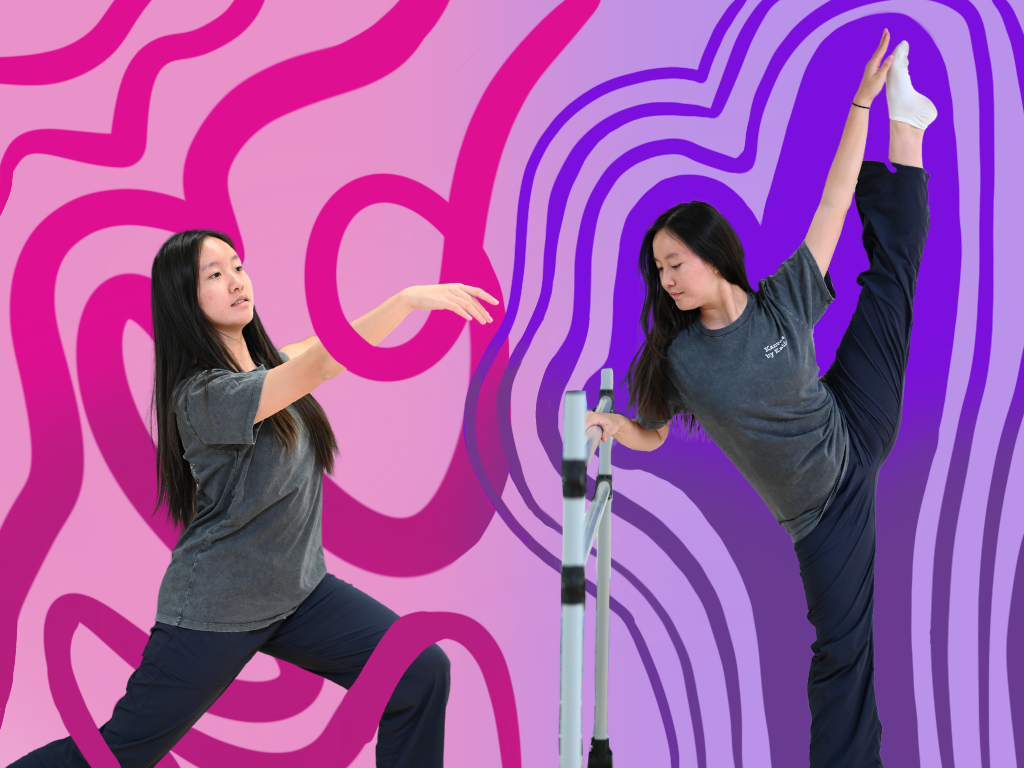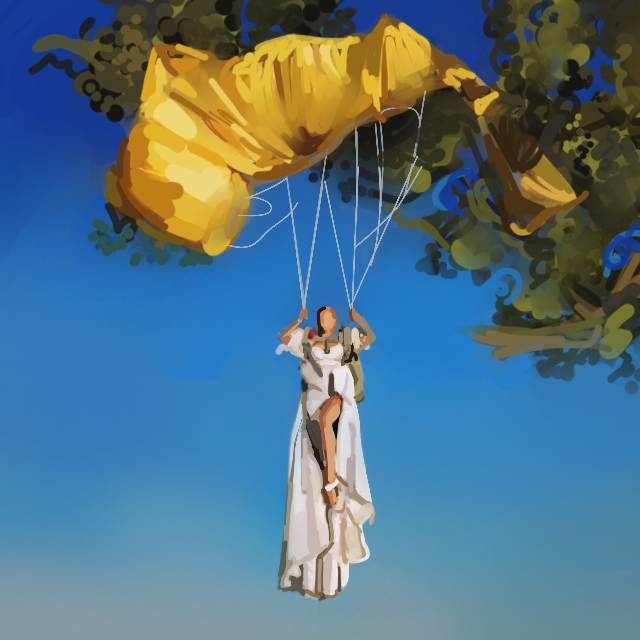In one studio, junior Harker Dance Company co-caption Hannah Jiang spends hours building up strength and flexibility for high leaps and balanced turns. In another, senior Kinetic Krew member Demitri Ajlouny turns up the music, practices his groove and works on facials. Balancing technique and artistry isn’t simple when performing or putting together a routine, and each dancer approaches it differently.
Technique is much more objective than artistry and follows pre-established standards. For instance, advanced technique in ballet might look like high leaps and many turns, while in hip-hop, it’s textures and body control. Hannah notes that as dancers progress more in their skills and career, artistry becomes the primary way to stand out and bring the performance to another level.
“For an audience that may not understand dance in terms of artistry, technique is one thing that you can elevate your performance with, like cool tricks,” Hannah said. “But if you’re performing for people who have seen dance or they dance themselves, artistry can go a long way because the more you watch dance, the more you get bored of the constant aerials and flips.”
Dance teacher Jill Yager shared her take on the relationship between technique and artistry.
“Technique is the fundamentals, the placement and the alignment, where you need to put your body,” Yager said. “Artistry allows you to play. You can’t have artistry without technique. The technique supports the artistry. Artistry is the dancer’s own style and choices and ability to make those choices in certain moments. They are there to balance each other out.”
When teaching dancers, instructors must decide whether to introduce performance or technique first. Yager argues that although artistry gives each dancer their individual flair, it still rests upon the building blocks of technical skills. Though dancers are trained to look effortless on stage, behind that presence is hours of honing their strength and flexibility.
“What’s really going to set you apart is the technique that will allow you to captivate somebody with your face and your energy,” Yager said. “You would think it doesn’t require a lot of technique, but it does. You have to have the muscles, alignment and balance to stand there grounded, and then be able to have the confidence to hold your audience with just a simple look.”
Various styles require different balances between technical prowess and performance. Demitri prefers dancing hip-hop because he can incorporate facial expressions, groove and musicality into his performance. He explains that despite technique’s importance, a dance could fall flat without emotion.
“Someone could have really good technique, but they might look insanely boring to watch while they’re dancing,” Demitri said. “However, you could also have someone who looks like they’re having the most fun in the world, but it’s not the most advanced dance.”
Many dancers attend competitions, where judges score their performance based on a rigid rubric. By confining the aspects that make a routine strong into set categories, these competitions place emphasis on technique over artistry, since the former is easier to evaluate in an unbiased way. However, Hannah believes that these criteria turn dance from self-expression through movement into an unhealthy pursuit of perfection.
“They’re kind of losing the point of dance in the first place,” Hannah said. “It’s a form of expression. Once you just focus on the ‘wow’ factor and leave behind the idea of expressing a story or a theme, that’s definitely a negative trajectory.”
Hannah shares that experimenting with different styles can improve a dancer’s ability to adjust the balance between technique and artistry depending on the style. For instance, hip-hop tends to emphasize performance skills as a fundamental whereas ballet strictly builds upon mechanics and flexibility.
“I got exposed to hip-hop, contemporary and jazz, which switched my perspective on what’s more important,” Hannah said. “You could have a dance with perfect technique, perfect kicks and it’s super clean, but doesn’t really have any personality to it. Having artistry in a dance is really what gives it life.”


















![“[Building nerf blasters] became this outlet of creativity for me that hasn't been matched by anything else. The process [of] making a build complete to your desire is such a painstakingly difficult process, but I've had to learn from [the skills needed from] soldering to proper painting. There's so many different options for everything, if you think about it, it exists. The best part is [that] if it doesn't exist, you can build it yourself," Ishaan Parate said.](https://harkeraquila.com/wp-content/uploads/2022/08/DSC_8149-900x604.jpg)




![“When I came into high school, I was ready to be a follower. But DECA was a game changer for me. It helped me overcome my fear of public speaking, and it's played such a major role in who I've become today. To be able to successfully lead a chapter of 150 students, an officer team and be one of the upperclassmen I once really admired is something I'm [really] proud of,” Anvitha Tummala ('21) said.](https://harkeraquila.com/wp-content/uploads/2021/07/Screen-Shot-2021-07-25-at-9.50.05-AM-900x594.png)







![“I think getting up in the morning and having a sense of purpose [is exciting]. I think without a certain amount of drive, life is kind of obsolete and mundane, and I think having that every single day is what makes each day unique and kind of makes life exciting,” Neymika Jain (12) said.](https://harkeraquila.com/wp-content/uploads/2017/06/Screen-Shot-2017-06-03-at-4.54.16-PM.png)








![“My slogan is ‘slow feet, don’t eat, and I’m hungry.’ You need to run fast to get where you are–you aren't going to get those championships if you aren't fast,” Angel Cervantes (12) said. “I want to do well in school on my tests and in track and win championships for my team. I live by that, [and] I can do that anywhere: in the classroom or on the field.”](https://harkeraquila.com/wp-content/uploads/2018/06/DSC5146-900x601.jpg)
![“[Volleyball has] taught me how to fall correctly, and another thing it taught is that you don’t have to be the best at something to be good at it. If you just hit the ball in a smart way, then it still scores points and you’re good at it. You could be a background player and still make a much bigger impact on the team than you would think,” Anya Gert (’20) said.](https://harkeraquila.com/wp-content/uploads/2020/06/AnnaGert_JinTuan_HoHPhotoEdited-600x900.jpeg)

![“I'm not nearly there yet, but [my confidence has] definitely been getting better since I was pretty shy and timid coming into Harker my freshman year. I know that there's a lot of people that are really confident in what they do, and I really admire them. Everyone's so driven and that has really pushed me to kind of try to find my own place in high school and be more confident,” Alyssa Huang (’20) said.](https://harkeraquila.com/wp-content/uploads/2020/06/AlyssaHuang_EmilyChen_HoHPhoto-900x749.jpeg)










